Now that Fenris Warzone has been out for a while, why don’t we take an in-depth examination of one of its main features, the “mini-update” to the Chaos Daemons codex.
As with the other not-quite-a-codex releases we’ve seen recently in the various campaign books (Tau, IG, SW, etc) Fenris Warzone doesn’t overwrite most of the things that are in the current codex, but rather adds a new set of formations to them as well as various artefacts, warlord traits, psychic powers, etc. This sort of partial update isn’t a full fix for books that are lagging behind, but let’s be honest with ourselves- there’s no guarantee that a brand-new codex would be, either. So it is at least a welcome addition to things in terms of bringing a few new options to the table.
I had already done some writing on the subject when the book was first released; now, having some more time to talk the subject over with other players and read the book in detail for myself, I thought it might be helpful to go over everything with a fine-toothed comb and really pick away at what I think has possibilities and what is probably just chaff. Be warned, this article will be fairly extensive and thus not particularly compact- however, for readability’s sake, it is broken up into sections discussing each of the major components of the book.
Overarching Bonuses
The Daemonic Incursion’s over-formation bonuses are comparatively small when measured against things like the Decurion or Gladius; while this can be a bit unimpressive at first glance, it compensates by having more flexible and effective core formations compared to those others, which I think is a good change overall. This also has the advantage of allowing the different daemonic alignments to have a greater effect on the overall flavor of the detachment, which is helpful.
The big and obvious benefit is Daemonic Corruption, which allows the player to “corrupt” objectives that their units have taken control of during any point in the game and keep control of them even once the original unit has moved away, at least until the enemy moves into range to control (and thus “cleanse”) them. In normal missions the benefits of this are somewhat dubious- it allows an aggressive army to forgo the need for backfield objective scorers and prevents the enemy from simply shooting you off of objectives, but is otherwise not a huge game-changer. In ITC and Maelstrom missions, however, it can be incredibly valuable- the ability to claim widespread objectives and force the enemy to waste time moving over to them to counter your claim is extremely valuable. Progressive scoring makes Daemonic Corruption an invaluable resource for the army, since it magnifies the usefulness of holding objectives in the interim turns of the game.
The second benefit, Unearthly Power, allows you to add or subtract one from the Warp Storm table results. Mostly this will be used to mitigate the more awful results on the table, especially in combination with the warlord trait that allows you to reroll the result entirely. However, it also can be used to greatly magnify your chances of getting the upper tier of results (10, 11, 12)- for example, while the chance of rolling boxcars is only 1/36 (or about 3%) the chance of getting an 11 or 12 on the table (which you can use Unearthly Power to turn into a 12) is three times as high. As the Warp Surgre (+1 invuln) and Daemonic Possession (3d6 test or lose a psyker) results can both be quite devastating in many circumstances and significantly increasing the chances of getting them is a big boon in many situations. Unearthly Power is unfortunately necessary due to the shittiness of the Warp Storm table and its ability to just outright screw daemon players, but it can also be a powerful weapon at times.
The final ability, Warp Unleashed, allows you to reroll all your Daemonic Instability tests. Again, this acts more as a mitigator for an obnoxious rule in the core codex than a real “ability” per se, but it is fairly necessary. The only real point to note with regards to it is that it there is an element of risk (due to the chance of rolling a 12 on the table and losing your whole unit) any time you use it, so it may often be worth accepting a small failure rather than potentially erasing the whole squad.
Core Formations
The core formations are, in many ways, the biggest strength of the Daemonic Incursion. With four choices to pick from, the Incursion has far more options than most “meta-formations” do, although Tau and Eldar arguably have it beat due to shenanigans of their own in that regard. But each of the four formations come with some very useful bonuses that enhance what they do and have at least a small handful of choices to pick from, so none of them are really bad choices.
The Khornate core choice is the Murderhorde, which has the standard one Herald (or chariot-mounted Herald) and eight units of Bloodletters, Bloodcrushers, or Flesh Hounds. Khorne gets a lot of options in how to build their formation, though sadly neither Bloodletters nor Bloodcrushers are typically very impressive units. However, the Escalating Bloodlust benefit makes the ‘Letters a lot more attractive, as it grants any unit in the formation +1A so long as it’s within 6″ of another unit in the formation- as Bloodletters have the lowest base Attacks value, they benefit the most from it. The ability to simply field eight units of five Khorne Dogs is hardly worthless, however, and especially with a Herald on Juggernaut accompanying them they can be pretty significant threats. As with all Heralds taken in core and auxiliary detachments any Locus they possess will be shared with any units within 6″ of them. For the Khorne units, this can mean a lot of stacking bonuses- one attack from the formation, one attack from the Artefact, and one attack on the charge from Rage can mean crazy numbers of swings from even very small units.
Tzeentch gets the Warpflame Host, which I feel gets some of the strongest benefits of any of the formations- a fact that is only helped by the fact that Tzeentch’s units are often among the best in the codex. A standard one Herald and nine unit choices make for a hefty price tag, but the synergy of them is undeniable. Pink Horrors, Flamers, and Exalted Flamers are the available choices; with Flamers being rather subpar most players are likely to split between Horrors (for warp charge generation) and Exalted Flamers (for firepower.) The formation gives all of their shooting attacks +1 Strength thanks to the Storm of Daemonic Fire rule- in combination with the shared Locus, this can raise a mere Flickering Fire up to S7 AP4, which ends up being a lot more scary to most units than the basic version.
The Nurgle host’s iteration is the Tallyband, which is one Herald and seven Plaguebearer or Nurgling units. With fewer options than any of the other daemonic powers (since they have no chariot for the Herald and no third “troop” choice) they are a lot more limited, but thankfully the formation’s bonuses are relatively strong to compensate. Units charged by the formation cannot fire Overwatch and those locked in combat with it must make a Leadership test or be at -1 Strength and Toughness, which can be a huge swing in numbers. It can also enable some nasty tricks like using a squad of Nurglings and a Monstrous Creature to double-team something like an enemy MC and reduce it to T5 so it can be doubled out by attacks. Plaguebearers and Nurglings are typically not very impressive units, especially in a world of S6 and Ignores Cover, but there are worse things to take and the low total unit count combined with potentially-cheap models means it can be very low-investment, making room for other choices.
The Flayertroupe, last of the core formations, is sadly a bit underwhelming. While it only needs six “troop” units (which can be Daemonettes or Fiends) the primary formation bonus falls prey to a common issue GW has had with designing Slaaneshi units, namely that it reduces the WS and Init of enemies locked in combat with them- and effect that is almost wholly redundant when most Slaanesh units are already superior to their opponents in those respects. It gets the standard sharing of Loci, of course, but with no other benefits it ends up being a somewhat weak choice at the end of the day, even though Daemonettes are not at all bad when taken on their own merits.
Command and Auxiliary Formations
The Incursion actually has two very strong command choices in addition to its auxiliary ones, something that makes it distinct from most meta-formations. The first, Daemon Lord, allows you to take one of any Greater Daemon or Daemon Prince, including their named variants. This is one of its most powerful aspects, since it allows you to bring a large number of FMCs or other tough targets very easily. However, there is a contradiction in the book’s text- it lists command choices as both 0-3 and 0-4 in different places, so it’s a bit ambiguous exactly to what degree this strategy can be implemented.
The other command option is the Infernal Tetrad, a formation from the same book that allows a somewhat similar type of choice. Consisting of four Daemon Princes with different alignments, it gets a scaling set of bonuses (culminating in +1 Toughness, which is highly relevant) depending on the number of models in the formation alive. It also allows the Tetrad to share a warlord trait amongst all four models, which can potentially be incredibly strong with some of the results on the new tables. However, since it is likely to cost in the neighborhood of 1200pts on its own, the Tetrad is something of a tough sell- especially because the Khorne Prince is likely to be rather lackluster overall. DeeJay has written a more in-depth discussion of the Tetrad here for those interested; I don’t agree with him on all points, but he makes a lot of good arguments and I feel his general build advice is pretty spot-on.
The Gorethunder Battery is the first of the auxiliary formations and is one Herald on a Blood Throne with a unit of three Skull Cannons. So long as all three Cannons can fire, they can replace their normal shots with a single S8 AP3 Ignores Cover 10″ blast- which, though ITC bans most such attacks, is still legal to use. The Skull Cannons are pretty fragile overall and not exceptionally cheap; the Battery is much more likely to make an appearance allied in to another army rather than being part of an Incursion, I think. For all its limitations AP3 Ignores Cover is still a very strong profile, so I would keep an eye on this one- it may be a breakout star at some point in the future.
Tzeentch has the Burning Skyhost, which looks pretty good until you start adding up the numbers. With one Herald on Disc or Chariot and nine units of Screamers or Burning Chariots, it just ends up being an incredibly expensive investment- something like eight hundred points minimum. Although Screamerstars are, of course, a thing, they inevitably consist of one Screamer unit with multiple Heralds, not the other way around- and the formation bonuses (+1 hit for Slashing Attack or enabling d6 stronger hits for the Chariots) are hardly going to impress, either.
The Rot Swarm is also fairly pricey, though a bit less so and a bit more self-sufficient. With the option for seven of either Plague Drones or Beasts of Nurgle to accompany the Herald (the latter of which can be taken in solo units, significantly dropping the potential investment) it starts off relatively cheap. All of the units get Poisoned Hammer of Wrath attacks, which is sorta okay, and the Herald can make a Leadership test to give one unit +3A and reroll charges, which is a pretty big upgrade (especially if you’ve bought an Ethersword or two.) Nurgle deathstars have made some pretty good performances on the east coast in the past, so I wouldn’t put it out of possibility for this to make some appearances at tournaments.
Slaanesh thankfully gets a much better auxiliary than their core, and since so many Slaaneshi units are so similar it can act as a replacement for it pretty easily. Six units of either Seekers, Seeker Chariots, or Hellflayers (which might as well be Seeker Chariots anyways) are the main component, along with the single mounted Herald. The bonuses are both pretty relevant, giving them an extra 6″ or Flat Out or Run distance- which can mean up to 18″ of distance covered, a pretty enormous amount by any standard. The chariots also inflict d6 extra S4 hits- these are a lot weaker than the Rending hits that they get normally, but since you actually get both sets it can be a nice little bonus. It’s especially notable with the Hellflayer, whose rider gets extra attacks for every hit done by the chariot. I wouldn’t rank the formation particularly highly, but it’s pretty acceptable for casual use.
The Forgehost is one of the few unaligned options (though of course it can upgrade to them if you want) for a Daemonic Incursion, and it mostly leans on the strength of its component units. With three Soul Grinders, which are excellent units in any capacity, it’s pretty hard to go wrong; the formation gives them the ability to reroll failed hit/wound rolls for a phase once one of the models has inflicted a casualty in that phase. This is surprisingly useful, especially if you are running the Phlegm Bombardment version of them where the reroll does a lot of good and the chances of pushing through a wound is pretty high to boot. The assault phase is where it really shines, though, since you can pick the order of combats and their low WS value is typically the biggest limiter on Soul Grinders. Although it isn’t specifically synergetic with most of the rest of the Incursion, the Forgehost makes a solid auxiliary choice in many cases anyways.
Lastly, if you want to avoid spending any more points than required a simple unit of Chaos Furies is available as an auxiliary option- 35pts, no frills.
Hellforged Artefacts
In addition to the artefacts that are available via the Rewards system, Daemons that are allowed to select a Reward can also take one of the Hellforged Artefacts printed in the Fenris Warzone book- however, it is worth noting that a model cannot have more than one such item, regardless of source. Each of the four gods has a unique list, though the balance between them is pretty questionable. However, they add a lot of mileage to the armies and give some very interesting options for different gods to customize their forces.
Khorne, unsurprisingly, gets a lot of melee-focused items. 15pts buys you A’grath, a +1Str power sword that always hits on a 2+ in challenges (though Bloodthirsters cannot take it.) Similarly, Deathdealer is the same cost and is an alternate Axe of Khorne that d3 S3 hits anytime it kills something. The Crimson Crown, which was mentioned earlier, is expensive at 40pts but grants an 8″ radius of +1 Attack for Khorne Daemons, which stacks well with the many other bonuses that the formations can get- the viability remains to be seen, but expect to see someone trying out a list with Bloodletters putting out five attacks each on the charge. Skullreaver is pricey at 30pts and makes your attacks Str D on a result of 6 to hit, which is potentially amazing for dealing with hard targets and is probably superior to the D-Thirster since it gets to swing at Initiative. Khartouth the Bloodhunger is even weirder- any unsaved wound from the power sword causes the affected model to vanish from the table, reappearing on a 4+ at the end of each of its controller’s turns within 12″ of its original position. Lastly and probably most importantly is the Armor of Scorn- 30pts gives you Adamantine Will and -1Str against all shooting attacks (and 3+ armor if you didn’t have it.) This makes it almost possible for a Bloodthirster to get into combat sometimes, so expect to see a lot of people trying it out, especially as part of a list that spams FMCs.
Tzeentch also gets a very strong array of artefacts with much more diverse uses, as is often the case. The Paradox is a 25pt Staff of Change that lets you “invert” one psychic test per turn, turning 1s into 6s, 2s into 5s, etc- this guarantees success of a spell in most cases, although at the potential cost of suffering Perils. As psychic powers can be absolutely critical for many daemon armies it will be a major feature of many of them, though competition with other artefacts will probably mean that it isn’t omnipresent. The Endless Grimoire is 35pts and lets you know every power from Change, but nothing else- as there are several very good powers on that list this is potentially a nice deal, but the cost (and fact that it is most useful on lower-level casters that won’t make as good of use of it) are big limiters. The Soul Bane is a really weird one- it has Fleshbane and an AP value equal to the Initiative of the target (and AP1 against vehicles.) This can be either very good (such as against a Riptide) or very bad (such as against a Wraithknight); the best option is perhaps to take it on a Daemon Prince, where it will always be at least AP2, although this raises the question of whether it is worth it for Fleshbane alone. The Oracular Dias is a 10pt upgrade on a Disc of Tzeentch that allows you to automatically pass one reserve roll per turn- this is a pretty huge benefit and is almost certainly worth it if you aren’t expecting to take any other artefacts. The big winner for Tzeentch is, as with Khorne, a defensive tool- the Impossible Robe gives you a 3+ invuln but forces a Leadership test for every failed wound or get removed from the table, just like old Fateweaver. Cheap at 25pts, it still has a definite risk involved, since daemons cap out at Ld9 in almost all cases- that’s a 1/6 chance of dying from every wound. Lastly, another, more differenter staff has a Str 5 AP3 flamer built in, which is a pretty nice tool when you’re flying around the table causing havoc.
Nurgle finally gets access to a good suite of debuffs, although the fact that they do so through items rather than powers is a bit odd. However, one can’t argue with the variety and cost on most of them, so it works out fine. Grotti the Nurgling is 40pts for a -1 Toughness aura within 6″; if affects friendly models as well as enemy, but not Nurgle ones. Since it stacks with the benefit of the Tallyband, this can potentially reduce an enemy MC to T4 or MEQ to T2, both hugely crippling- expect its bearer to be a priority target if you can get it into range (on, say, a flying Prince.) Corruption is a Plague Sword that wounds automatically- decent in many cases to prevent the appearance of the Dread ‘1’ on the dice, but against things like Wraithknights it can be particularly terrifying. The Horn of Nurgle’s Rot gets you a free Plaguebearer model for every casualty the bearer causes, but as it can only be taken on Princes and Heralds this will often be a bit tricky. Epidemia gets you a Toughness test for every wound you causes, with failures causing a “bonus” wound to another model- as Nurgle’s inability to Sweep is often problematic, this can be a useful bit of extra damage. The Doomsday Bell is probably the biggest takeaway from the list- 30pts for an Instrument of Chaos that also gives -1 Leadership to everything on the enemy side, which works great in combination with many other psychic powers and abilities (or just old-fashioned shooting.) Sadly, only Heralds can take it, but buried in your backline somewhere it can prove incredibly annoying for many armies. Finally, the Death’s Head of Duke Oaks is a large-blast 2+ poison version of the standard kind- with weak AP and only one use, it’s not really ever going to be interesting.
Slaanesh, sadly, gets easily the weakest set of artefacts- there are no real standouts here and only a handful of them have even particularly interesting effects. The Soulstealer is perhaps the best of them- for 20pts, it lets you regain a wound every time you do a wound to an enemy with it and on MCs the mediocre AP value is irrelevant; it gives a Keeper of Secrets at least a slim chance of staying on the board, presuming it can get into combat with something. Slivershard is even more expensive at 30pts and gives you two bonus attacks and that’s it. Not a horrible deal, but when the main virtue of Slaanesh’s units is their cheapness, it hardly is going to prove much use (especially since they already have good numbers of swings.) The Slothful Claw is a lot more acceptable at 10pts and it transforms one of your attacks into a +2Str AP2 hit- not much for a MC, but on a Herald you might consider it over an Etherblade occasionally. The Forbidden Gem is one of several items that might have been good if they could be taken on anything other than a Herald- it forces a 3d6 Leadership test and penalizes WS/Init by an amount equal to the failure; since, as mentioned before, Slaaneshi units almost always have superior WS/I values already, the penalty ends up being pretty meaningless even when it is applied. Similarly, the Whip of Agony would be amazing if any of the MCs could take it, but it is only available to the crappy sub-Herald character; it lets you reroll wounds and if you push one through, the enemy you wounded can’t make any attacks this turn. Great when you’re Str 6 and AP2- not so much when you’re Str 4 and AP5.
So with the exception of Slaanesh, all of the daemonic powers get some really good artefacts that can compete with the codex ones for spots on your characters; I think that overall this is a good thing, since it means you’ll see more distinct builds of Daemons. Of course, the Grimoire is so powerful you’ll still see it in virtually every list somewhere, but it’s no longer the sole and only concern.
Psychic Disciplines
With the exception of Khorne, each of the four powers’ psychic disciplines were also expanded from the “mini” versions in the codex up to full-sized disciplines with six powers and a Primaris. Unfortunately the existing powers weren’t changed at all, so some of them are still rather lackluster- however, the new power additions are almost universally quite good, so as a whole they end up being fairly strong overall (especially as none of them were complete garbage before.) They won’t stack up to, say, Maelific or Telepathy, but there’s at least reason enough to still roll no them in many cases and their presence is actually a boon rather than just a waste of space.
Tzeentch adds several very good witchfire attacks as well as a summoning power to the mix; since its powers were arguably the best already (bar Firestorm), this puts it solidly in the lead where it should be and makes the “know all Change powers” abilities quite valuable. Tzeentch’s Warpflare is a 9″ nova that causes 2d6 hits at AP4 and d6 Strength with Ignores Cover- due to the number of dice being tossed about it will be very random in its effectiveness, but as a fairly large nova that FMCs can get it has some definite potential and is comparable to Cleansing Flame, a strong power. Boon of Flame gets you either an Exalted Herald for WC2 or a Chariot for WC3- since the Herald can’t join units or shoot effectively the turn he comes down, you will likely want to make the chariot most all of the time. Lastly, Prismatic Gaze gives you a Str D AP1 shooting attack, albeit only with one straight shot that can very easily fail. Destroyer is never anything to sneeze at, even with such a high cost, and the possibility of getting it on some Pink Horrors is a pretty scary thought- no one wants to lose a Knight to a 99pt troop unit. The Change discipline seems like it will be a definite contender for both Pink Horrors and Lords of Change, both of which can make good use of it.
Nurgle gets a swathe of buffs and debuffs, which seem fairly fitting overall for the plague god. None of them are exceptional standouts, but there are some interesting tricks in here and with the right luck you could pull off some very nasty units. However, with less reliability than Tzeentch in terms of what you get (due to greater variety on the table and lower-level overall casters) I would definitely rank these powers a bit lower. Still, the Plague Primaris power is usually going to be the best one around, so it ain’t bad to be green. Debilitating Distension is the first of the new powers, stopping an enemy unit from Running, Sweeping, or firing Overwatch. Since Daemons can’t be Swept and several other effects also prevent Overwatch this is a bit of a niche ability, but it can be a real game-winner when you do it right by preventing the enemy from getting onto critical objectives. Final Decomposition is a very unusual focused witchfire; it has AP2 Ignores Cover, and Instant Death, which make it pretty brutal against most targets, but rather than rolling to wound it rolls a d6 and does a wound if you roll higher than the target’s remaining wounds. It’s rather unreliable against the targets you really want it to hurt, but when it works it will be absolute murder. Lastly, Putrescent Vitality is a blessing of variable WC that gives the target a bonus to its Toughness equal to the cost you selected (max 3); getting some Plague Drones up to T8 would be pretty hilarious, but even the more realistic WC2 casting is still going to make almost any Nurgle unit insanely tough to bring down.
Slaanesh doesn’t get stuck with the short end of the stick nearly so much in the psychic department, although there’s no Lash of Submission in here, either. Phantasmagoria is essentially identical to Dominate from the Telepathy tree- not an exciting choice, but not awful, either. It’s shorter range than its counterpart, but has the advantage of also sometimes preventing them from making melee attacks, so there’s that going for it. Maniacal Fervor is a solid blessing that does d6 S3 hits to one of your units, then gives it Rage, Zealot, and Furious Charge- it’s typically worth losing 1-2 Daemonettes to give the rest of them a major buff, and among other things it allows you to potentially glance a Knight on the charge as well as be a holy terror to most anything else. Finally, Slicing Shards is a large blast attack with mediocre stats that causes d6 “bonus” hits on anything that fails a Leadership check- if it had Ignores Cover I think it’d see some use, but the statline is just too weak for a WC2 power overall.
Warlord Traits
Daemons also get a new set of tables for their Warlords, which are wildly variable in their quality. Tzeentch’s table is borderline-broken, especially with shenanigans to share it amongst other models (as with the Infernal Tetrad); Slaanesh’s is weak to the point of boredom. Still, they are mostly quite thematic and will probably see a lot of use, so it’s nice that there’s something out there other than the Strategic table. It should be noted that none of the formations in the Incursion allow you to reroll your warlord trait, unlike many such detachments.
Khorne gets a couple of very solid choices, a couple of very weak ones, and a few in the middle. Causing automatic wounds for failing a Fear check would be great… if Fear ever mattered to anyone but Orks. Rampage and +1Str are both far, far too small of effects to really care about- perhaps maybe on a D-Thirster the former could be okay, but you don’t typically want to charge a D-Thirster into a big group of enemies, nor do you want to make it your Warlord. FNP for the Warlord and 6+ FNP for all other Khorne units within 8″ is a much better deal- damage mitigation is often what daemons really need to be able to use their superior melee power, and warlord traits that affect lots of models are solid. Likewise, Rage for your Warlord and units within 8″ is a good bonus, although it does disincline you from taking the Locus of Fury to avoid overlapping the bonuses. Finally, being able to trade for a single Destroyer attack in melee is a cute trick, but probably only something you’d want on a Herald.
Tzeentch’s table is almost universally great- harvesting Warp Charge on a 3+ is a fantastic ability for a caster, as is ignoring one Perils result per turn. +1 to invuln for the warlord any any other Tzeentch within 9″ is unbelievably powerful, especially in combination with the Grimoire and/or Impossible Robe; massed 2+ rerollables are not a nice thing to see across the table. -1WS/BS when attacking the warlord is a very interesting effect, although since most Lords of Change will be in the air all the time it may not be as applicable as one might hope. One extra Mastery Level is very handy to have, although slightly awkward under ITC rules since it forces you to go back and generate another power. The only “miss” on the table is Soul Blaze for tzeentchian units within 9″, which is both redundant and ineffective in most cases.
Nurgle gets a variety of effects much like what you’d expect; +1 wound is a pretty obvious choice, and in combination with Rewards and whatnot can make a character nigh-unkillable. AP2 poisoned retal hits in combat aren’t amazing, but they can be somewhat handy if facing another tough target- between IWND and large piles of wounds to start with, you can get a decent amount of mileage out of it. A 7″ radius of only being able to Snapfire at the warlord can be devastating if he gets into the enemy lines, either by Deep Strike or other means. Doing bonus wounds to models you already wounded is, sadly, not a very good ability- unlike the artefact version, it can’t kill additional models in a unit. Feel No Pain is a great ability when you’re already so resistant to damage, and if you’ve already got it then +1 to the roll is awesome. The final ability is a significant upgrade over its brother- d6 poisoned 5+ hits any time you do one or more wounds to a unit within 7″, no armor/cover saves; this can quickly stack up casualties very easily.
Slaanesh’s tally here is probably on par with Khorne, although that isn’t terribly exciting at the end of the day due to lack of reroll. Running and charging in the same turn is great, especially with as fast as Slaanesh can be- a 30″ threat range every turn will give many players fits. Rerolling misses in a challenge is cute, but as the Locus of Beguilement already does you one better it’s not something you care much for. Rerolling all 1s to hit in the assault phase is great, though, since it applies to every Slaaneshi model in your army- you can’t ask for more than a board-wide buff. Causing Instant Death on 6s to wound is okay; it helps snipe enemy MCs and ICs and pairs up well with Rending, so it’s not too bad of an effect. +1 attack, though, is just godawful and forcing a standard Leadership check or have -5WS is barely any better- as I have repeated noted in this article, Slaanesh is already higher WS than most opponents and widening that gap does them very little good.
Overall Thoughts
So what does the Daemonic Incursion list mean? Well, it can bring some very solid core choices with aggressive or support elements and a variety of deathstar-y or Flying Circus-style inclusions in the rest of the army; both of these are good starting points. However, its inability to field large numbers of Heralds means that most Incursions will want to bring along a Combined Arms or other detachment in order to get the four-for-one choice there and use them to fill out a list.
I think the artefacts and warlord traits will be the biggest ones; both of these have some real game-changers in them and Tzeentch in particular gets an amazing selection of tricks to back up an already-solid set of unit choices that made appearances in the tournament scene. However, Nurgle shouldn’t be discounted, either, for a lot of the folks on the Atlantic side of things have been making a lot of use of them to good effect. I know several high-ranked ITC players are also tooling around with some rather unorthodox lists that make use of various features of the book; at the end, we may not see many top appearances of the Incursion at all, but rather players using parts of it in their toolboxes to strengthen lists that were already doing fairly well.

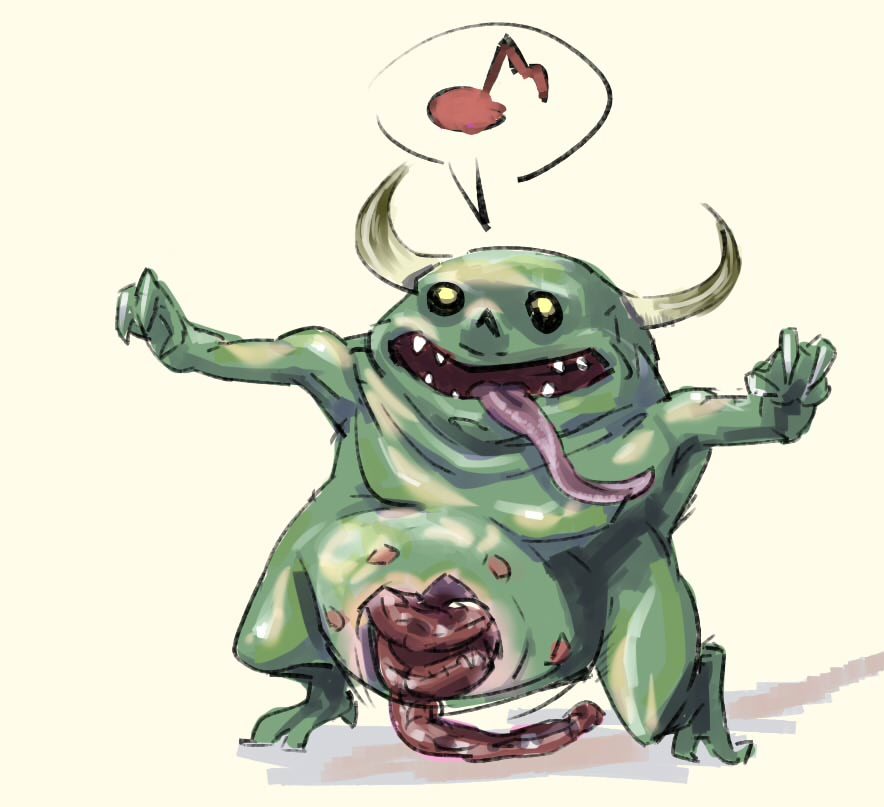
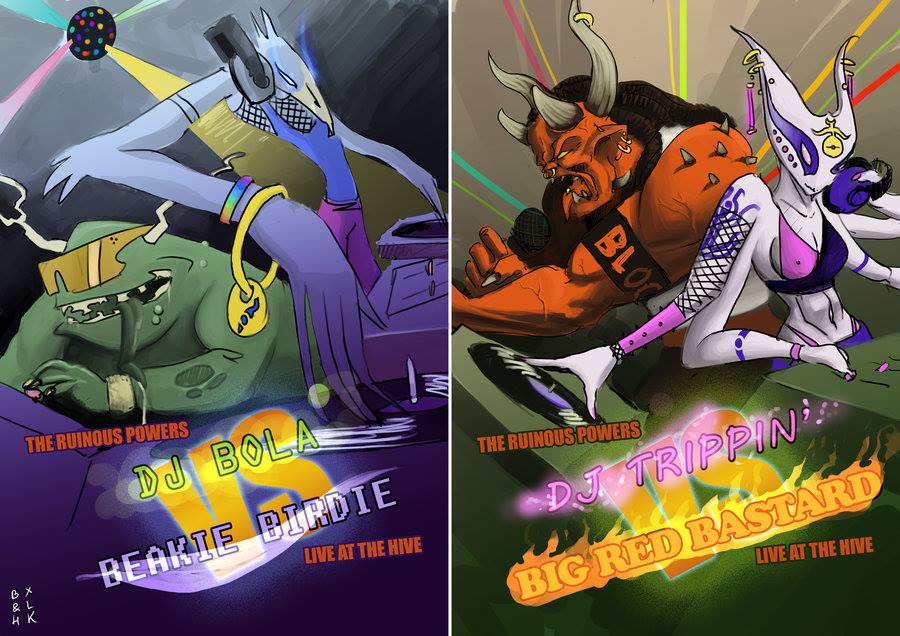
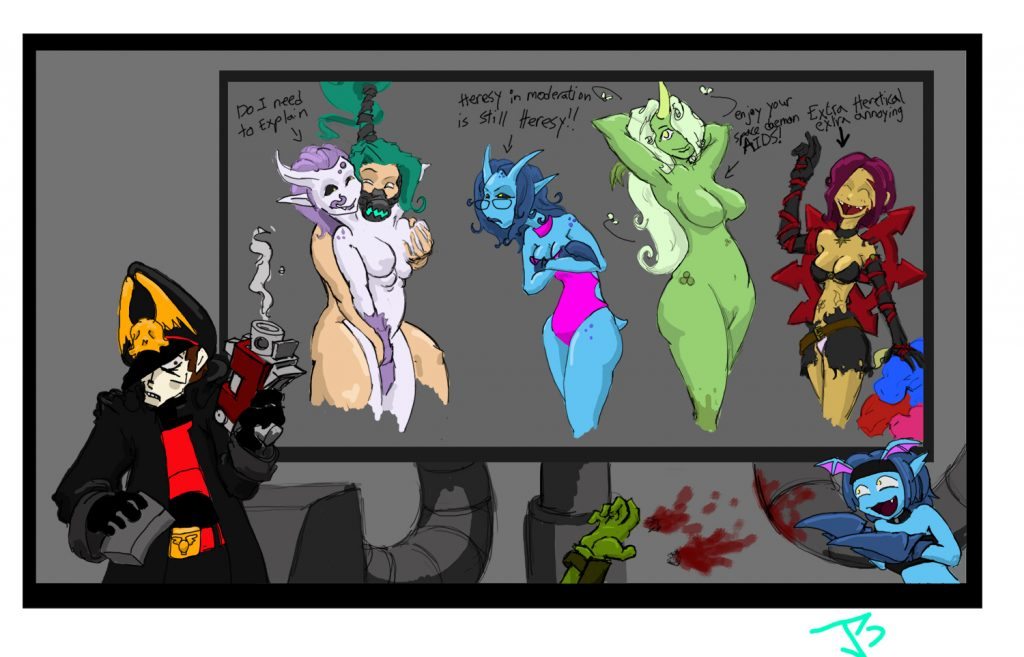
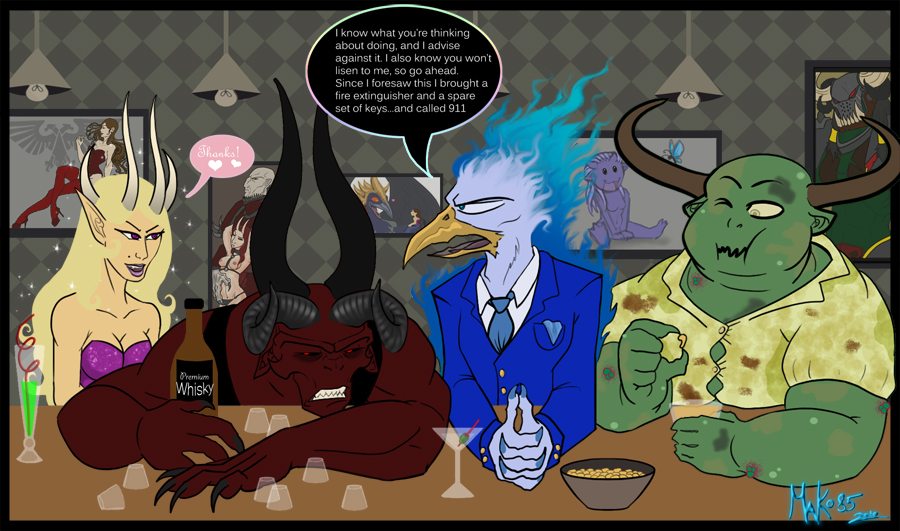
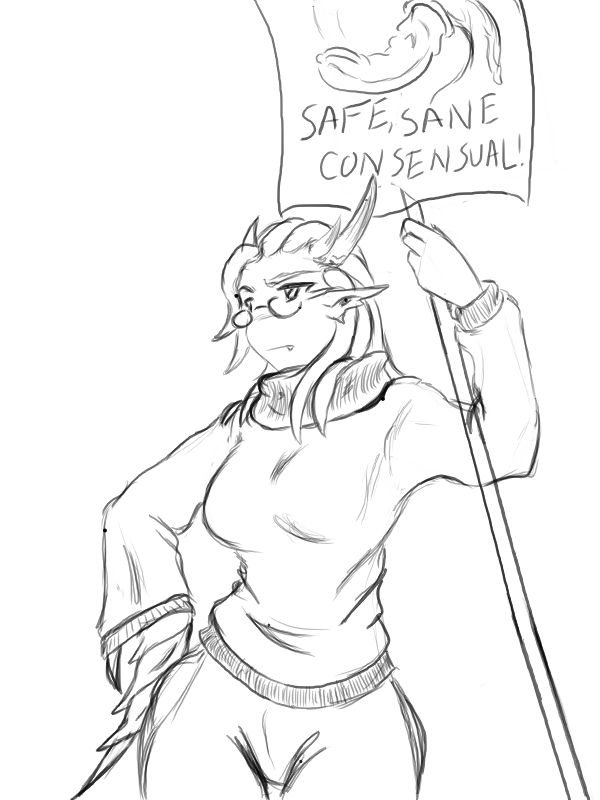
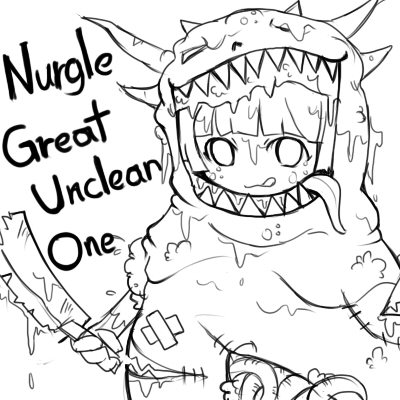
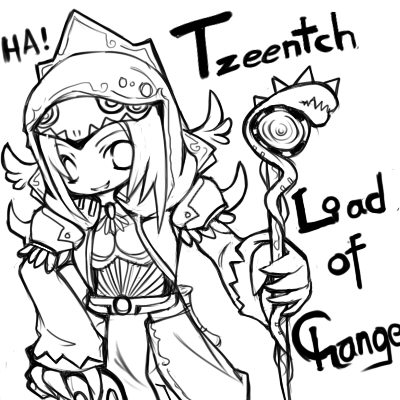
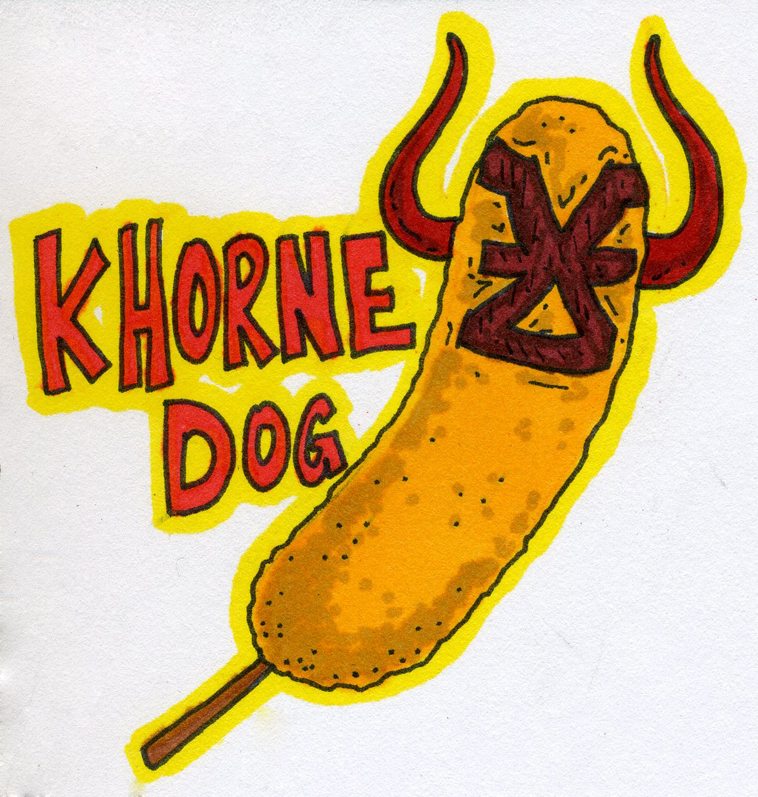
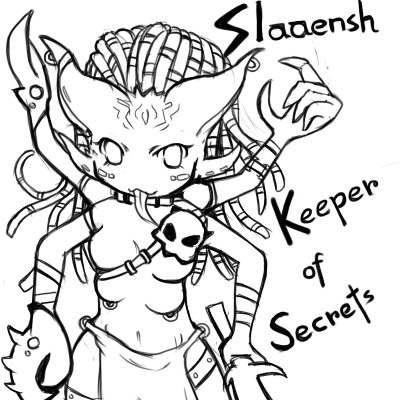
Good write up!
Tested Tetrad – it is a much harder list to play then old FMC as you don’t have the casting power you used to with the change to WC dice. I did find it interesting play.
ITC needs to make a solid decision on how the Tetrad and Warlord powers work. RAW means really only one gets it as it is your “warlord” but then that might not be in the spirit of the rules etc. If they do stack up etc – then it would mean any one DP dying gives up warlord as well – which could be a good way to balance it a bit as it won’t be hard to kill one of the buggers.
So far I think Murder Horde is a decent Core choice – with 50mm bases and a massed amount of bodies it gets hard to remove all the doggies. Mix in a Khorne Knight with the Legacy and you have a pain in the ass group of jerks. Heck the new Spell Group Cabal from Black Legion, Murderhorde, and a good ole Chaos CAD might be pretty strong haha. Or a Daemon CAD depending on what you want to do.
You’re definitely a lot more limited in how many powers you can cast with Princes now, but it’s also a lot easier to keep your Princes alive. The trick is how to make best use of each of the different alignments, because if only two or three of the four are pulling their weight, then the formation isn’t really worth it. Khorne and Slaanesh are the toughest, I think.
My interpretation of the warlord thing was that only one model in the formation was your actual warlord, but all four models in the formation shared the trait so long as that warlord was alive. As bad as GW is at writing rules sometimes, I don’t think they intended for your army to actually have four warlords in it.
I think Murderhorde is a solid core choice as well, although I’m torn between the possibilities for Hounds and ‘Letters. I suspect Hounds will win out due to superior speed, though.
I think you discounted the massed screamers. They are fantastic counters to scatpacks and warp spiders so they may not be too strong against a “random” list but if the general can get through the opening rounds of a tournament to the upper tier where those units abound then they’ll do really well.
Also, they have jetbike movement which combined with incursion benefits of grabbing objectives can be pretty brutal. Grabbing six objectives every turn would be pretty simple and make even a battle company struggle to keep up in progressive objectives.
Well, there’s a couple issues with the Screamers. First, they are expensive- nine units of them is almost 700pts, which is a large chunk of your army right there. And second, without buffs they are not particularly durable- T4 and a 4+ save (from Jink) means they will go down pretty quickly. And against Scat packs, you essentially have a shorter range than them- 12″ movement and 24″ turbo-boost against 12″ movement and 36″ shooting. They may not be able to wholly avoid you, but with each Screamer unit killing 1-2 Scat Bikes even if it manages to reach them, neither will they shred them particularly badly. (They are, of course, a lot better against Warp Spiders, but you’re going to have to fight a LOT of other lists, so I wouldn’t specialize so heavily just for that matchup.)
They are good for grabbing objectives, though, since you could corrupt an objective both in the movement phase (by landing on it) and in the shooting phase (by turbo-boosting over onto it.)
I wish I had more screamers so I could try a herald on disk with unit of screamers with shrouded on him surrounded by more msu screamers so they all have 2+ jink with rerolls.
I’m not sure how you’d get Shrouded on him, as the Herald of Tzeentch can’t roll on Telepathy. If you could, though, that would make it a lot more effective.
Belakor you silly
Sure, I mean both he and other models can roll on Telepathy, that’s just more of an external consideration beyond the formation. At that point you’re losing a lot of the strength of the mobility that the Screamers bring, since they have to stay clustered up.
A massive drawback indeed. I am sure generals better than I can find a way to make it work by knowing when to cluster, then zipping off to slash and charge units, and when to turbo onto objectives. I would love to see someone’s take on a list like that. Plus after thinning out most armies firepower you don’t have to be as afraid of the shooting phase later in the game.
The warpflame rule against eldar jetbikes and warp spiders is actually incredibly good, annoying against most opponents but against jetbikes and warp spiders you’ll do a lot of damage with those toughness tests throughout the game.
Killing Scatter Bikes isn’t actually very hard- they die to almost everything in the game. Warp Spiders are only marginally tougher against non-shooting attacks.
In both cases, the units are more taken for their utility, mobility, and firepower than for survivability. They typically stay alive by virtue of not being attacked, so things that increase your ability to kill (not attack) them are relatively meaningless.
Fair enough, but a list with this formation and the hounds made it to top 16 at adepticon so it must have some use. I don’t quite understand it either tbh, I was more trying to find a reason for success than arguing that it might be useful.
Adepticon’s mission and rules are rather different from the ITC ones, so I’m not surprised- being able to scatter MSU to the four winds is a big advantage against deathstars. But this being the home site of ITC, I pretty much always write with people who are playing it in mind. (Also I have no direct experience with the east coast formats and meta, so…)
The extra Mastery Level Tzeentch Warlord Trait is hilarious in an Infernal Tetrad, because it turns the Khorne Prince into a Psyker, and forces both him and the Nurgle Prince to generate Tzeentchian powers
I don’t really have the stuff to make use of the Detachment, but I’m definitely looking at an Allied Detachment to bring the Crimson Crown into my DK.
I actually think that the -WS for Slaanshi characters is more useful than you give it credit for, because often their already high WS combined with a nerf of the opponents WS means you’ll more than double theirs meaning you’re only receiving hits on 5+ rather than 4+. And that makes you able to actually engage other CC specialists rather safely. It’s mostly Heralds that are boosted by this I’d say, but Daemon Princes can get some extra security versus some targets that could actually threaten them in CC otherwise. But otherwise I agree Slaanesh is probably the most lackluster of the update.
Nice article!
I think I will keep my Slaanesh in a CAD, so my keeper with soulstealer and ML3 telepathy can reroll his warlord trait. Pray for that invisibility with run and charge!
It can sometimes push you into the realm of being hit on 5s, to be sure, but for the extremely-fragile Heralds this won’t be enough- your weak save and two wounds still mean that most competent enemies will smash you to pieces. On Princes/Keepers you are already so high that MEQs and whatnot hit you on 5s anyways, so the only thing you’re changing is other high-level combat characters… and again, these characters are so superior to you in a fight that they will probably destroy you anyways. Even with WS/Init 1, Chapter Smasher will beat a Keeper of Secrets every time.
Excellent article. I have started to play with the Tzeentch Warpflame host along with a Lord of change and Fateweaver. I use quite a few units of flamers combined with horrors. The plus 1 to strength is huge. I am very pleased with the update and feel a very competitive list can be built out of the new dicurion style list.
I don’t rate Flamers much- they need to get too close to do their job and there’s no good way to deliver a Deep Strike beacon for them. What is it that makes them so effective for you, out of curiosity? Have you tried Exalted Flamers in their place? In my experience, the combination of a great anti-tank gun and a great anti-infantry gun makes them a holy terror for anything trying to get into your backfield and they’re cheap enough to bring the base cost of the formation down a bit.
I definitely agree that +1Str is huge for the formation, though, especially since it stacks with the +1 from the Exalted Locus.
I’m also curious about your use of flamers in the warphost formation. Are you just rushing them to combat? What ratio’s of units are you using?
I’ve been using this for my standard warphost formation.
– 5 squads of 11 horrors
– 4 exalted flamers
– 1 herald with loci
I’ve found this to be very effective. The horrors act as psychic batteries and the flamers are big deterrents for people getting close. I tend to stick the flamers up front to maximize their board control, and sometimes I’ll stick two into one squad of horrors if there is a choke point on the board I want to hold.
I realIy enjoyed reading that article. However, I think you underrated the daemonic corruption special rule because you may not fully understand what you are able to do with it.
I believe there needs to be some clarification on the corruption special rule. The rule reads as follows: “Objective markers controlled from this Detachment count as controlled for the rest of the game, even if the controlling player has no units within 3″ of them. This effect lasts until an enemy scoring unit cleanses the objective by controlling it.”
I will highlight the important part of the rule again: “objective[s]… count as controlled for the rest of the game… this effect lasts until an enemy scoring unit cleanses the objective by controlling it.” So once you corrupt it, the enemy cannot contest. The enemy only has two choices: control the objective, or let you control it. This is extremely powerful if the enemy is lacking obsec and can be really powerful if you include a CAD with Obsec units.
Imagine you are controlling an objective and sitting on it. This objective has been corrupted earlier in the game. You do not have the Obsec special rule. The enemy has a (non-obsec) unit near the objective. In order for the enemy to capture the objective, he must remove all of your models within 3″ then move within 3″ of the objective. If the enemy simply moves to within 3″ of the objective while you still have models within 3″, you are still controlling the objective.
This works because of the wording of the corruption special rule. You control objectives that you corrupt until an enemy captures the objective. Therefore if the enemy has not captured the objective and is attempting to contest it, you are still controlling it. However in the previous scenario, if the enemy unit has obsec and the controlling unit doesn’t, the enemy can still move within 3″ of the objective and capture it.
Here is where adding a CAD to an incursion can be really powerful. If you corrupt an objective with a unit form the Daemonic Incursion detachment and then move an Obsec unit from a CAD onto that objective, you now control that objective absolutely until the obsec unit is removed from 3″ of the objective.
With that being said, I think it is important to stress the use of speed in a daemonic incursion. You have to get to the objective first to corrupt it and then you can sit on it and guard it. But if you don’t get there first, you cannot corrupt it. This gives great benefit to durable units that move extraordinarily fast such as screamers (turbo-boost) and flesh hounds (scout). Screamers are particularly potent as they can capture up to 2 objectives per turn and still perform a powerful slashing attack while doing so.
In fact, I think the screamer formation is one of, if not the best within the daemonic incursion. They can capture 2 objectives (even when they deep strike). They may not be extremely durable, but in order to mitigate that you would deep strike and slash attack vulnerable units. So immediately on your deep strike, you have inflicted an average of 9 s4 hits per unit with warpflame and soul blaze while moving to your desired location. As well, they can deal with high AV buildings with S5 AP2 armourbane attacks. They can also deal with enemy troops in close combat if need be, with 3 S4 attacks +HoW each. This formation gives you a plethora of one unit that is fast, semi-durable, anti-infantry and tank alike, and can deal a significant amount of damage while still moving 36″ a turn.
I recently won a tournament using a Tallyband, Burning Skyhost, and a CAD so I may just be full of myself at the moment.
Regardless, I really enjoyed this thoroughly written article about the Daemons update from CoTW. I think that a lot of material from this book will be seen in competitive play for daemons. Thanks for the writeup and let me know if you agree with 1, the interpretation of the daemonic corruption USR, 2. the strength of that rule, and 3, the strength of the burning skyhost
It’s true, it can function as a sort of “poor man’s ObSec,” provided you can get unfettered access to the objective long enough to corrupt it. But I think that’s more of a secondary use, given the nature of most Daemon armies- they tend to either table or be tabled, in a lot of games. I may indeed be selling the rule a bit short- we’ll see after I get in some more games against it and have more experience with the formation.
I don’t think the Skyhost is innately bad- it’s just very expensive for what it does, because it includes so many units of a moderately pricey model. Sometimes, sure, you’ll be able to DS in and Slash Attack your way across the enemy army and cause some attrition, but against something like a Decurion (who will just kind of laugh off your attacks) or Tau (who will kill half your units before they can move) or Battle Company (who don’t care how many S4 hits you want to do) it’s just not cutting the mustard. And I’m not trying to declaim what success you may have had with it- I have no idea who you played, what else was in your list, etc, I’m just speaking from what I see looking at the weaknesses of it.
Screamers are a fine unit in and of themselves; I think that’s been more than proven already. If it was 3×3 Screamers or even 6×3 I think I’d have a lot more respect for it, but nine units is just too much of an investment for my tastes when when you’re getting a Herald in with them.
I definitely think we’ll be seeing stuff from the Incursion in competitive armies, it’s just a matter of exactly what things. The warlord traits and relics, certainly; the formations possibly, the detachment as a whole perhaps. At the very least there are some smart brains working on the problem even as we speak.
The control an objective rule states if one of your scoring units and none of your opponents scoring/denial units is within 3″ of an objective you are controlling it. So there is no restriction on when you test to determine if you are controling it. Therefore, if you are moving a model past an object, but within 3″ of the objective during the move, you could argue you were controlling for that split second and it is corrupted from that point forward
The issue was discussed significantly when Fenris was first released- I believe that Reece and Franky had said that ITC would play it so that you can only control an objective once a unit finishes its movement (in whatever phase), although I don’t know how official that is.
Does that mean you could still move onto one, then turbo onto another, then jet move onto another?
Beau — you could move to one, turbo to another, and then consolidate from assault to a 3rd.
Realistically though that never happens.
Aidan — what makes the screamers in the burning skyhost formation over the top is the bonus they get.
+1 slashing attacks does not seem like a lot at first, but it’s actually 50% more damage! Each screamer will be hitting ~3 times instead of 2, meaning that an average slashing attack will deal 9 hits instead of 6.
In addition they also throw soul blaze and warpflame on each unit hit. A T4 unit has a 55% of suffering one of those two effects.
Most of the formations from the “Wulfen Book” are expensive. They also give some very nice perks for taking them.
Armor of Scorn does not give there bearer Eternal Warrior. It gives him Adamantine Will.
Ah, my mistake, thank you.
Concerning flamers: I use up to 4 squads (and I plan to use a 5th). I try to deep strike them where they can get a shot off. It is not as risky as I use them in units of 3. Surprisingly easy to stick the landing with one model then place the other two. Having that many squads gives me redundancy for my strategy depending on what targets I want to hit. AP 4 strength 5 hits can hurt many armies. Another way to mitigate scatter is the use of icons in the horror squads which I can push up field if necessary before my reserves come in. I absolutely agree that the exalted flamer is super good but I only own one currently and thus have to build based on what i have at hand. I do use the one I have though.
I recently picked up 4 kits of the burning chariots and I’m impressed with what the kit comes with.
You get a herald, a exalted flamer, 2 horrors and 2 screamers. You need to use a little putty work to complete the screamers tails, but it’s not hard.
That’s a lot of models for 40 bucks.
The Herald/Exalted Flamer model also comes with a surprising number of bitz and bobs that can can be used to turn regular Horrors into fancier guys. If you scrounge about on Ebay, you can often find them for very reasonable prices.